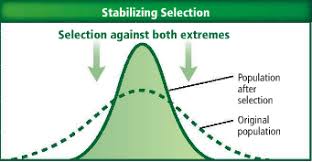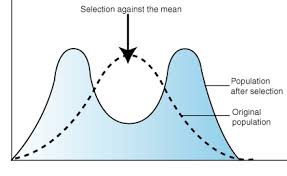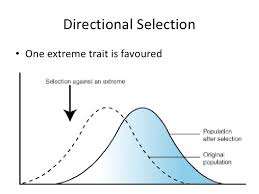Chapter 17-18: The Theory of Evolution
1/42
There's no tags or description
Looks like no tags are added yet.
Name | Mastery | Learn | Test | Matching | Spaced |
|---|
No study sessions yet.
43 Terms
The formation of Earth
Earth is estimated to be 4.5 billion years old (700,000 x recorded history)
Fossils
Preserved remains of, or tracks of ancient organisms
Can be perfectly preserved
Reveal information about structures of ancient organisms, evolution, and common ancestors
Radiometric dating
A method of dating a geological or archaeological specimen by determining the relative properties of particular radioactive isotopes present in a sample
Method to determine age based on radioisotopes
How energy is released from atoms
Length of time energy is released - half life
Can test fossils, rocks, soil, etc.
Earth’s early stage
Atmosphere had little to no oxygen
Made of carbon dioxide, nitrogen, water vapor, and hydrogen sulfide
Most living things today would not have survived
Earth’s atmosphere changed over time
Concentration of oxygen increased
Many anaerobic organisms died
Some evolved to use oxygen in metabolic pathways
The first cells
We do not have concrete evidence of the first cells
Data suggests molecules needed to build amino acids and other molecular compounds were present on Earth
Inferences based on today’s prokaryotic cells and Earth’s early forms
Fossil evidence of prokaryotes found to be 3.5 billion years old
The first cells:
Prokaryotic
Aerobic (lined on O2)
Hetertophic
Had RNA
Membrane of lipids
Fossil evidence of eukaryotes found to be 2.1 billion years old
Eukaryotes cells are complex
Many organelles
Complex metabolic pathways
Very little evidence on how they came to be
Endosymbiotic theory
Endosymbiotic theory
Theory suggesting complex organelles originated from prokaryotic cells that were engulfed to form a symbiotic relationship with ancestral eukaryotic cell
Charles Darwin
Traveled the world
Galapagos Islands
Noticed three distinctive patterns of biological diversity
Species vary globally
Species vary locally
Species vary over time
Species vary globally
Different but ecologically similar species inhabited separate but similar habitats around the globe
Ex: Ostrich in Africa (grasslands) vs. Emu in Australia (grasslands)
Some species only found in retain parts of the world despite similar habitats in other places
Ex: Kangaroos in Australia’s grasslands
Species vary locally
Different yet related species occupy different habitats within a local area
Ex: Tortoises from different islands of Galapagos
Species vary over time
Some fossils of extinct animals were similar to living species
Ex: Armadillos and Glyptodont fossils
Evolution
Heritable change in the characteristics within a population from one generation to the next
Expressions of genes passed from one generation to the next
Changes in amino acid sequences due to changes in DNA (mutations)
Changes in characteristics explain changes in organisms
Beliefs during Darwin’s time
Organisms were permanent and perfect
Earth was thousands of years old
Religion held answers about formation of Earth
George Cuvier
Charles Lyell
Jean Lamarck
George Cuvier (1769-1832)
Studied fossils and anatomical structures of living animals
Hypothesized that habitats determined anatomical form
Did not believe in change, all animals have anatomical forms for their needs
Catastrophes cause new species
Work was still important for Darwin
Charles Lyell (1797-1875)
Studied geology - relatively new science
Hypothesized that Earth was extremely old and processes that changed Earth in the past still operate in the present
Jean Lamarck (1744-1829)
Believed populations change over time
Explanation:
Organisms change in their lifetime by selectively using or not using various parts of their bodies
“Use and disuse”
Pass traits on
The Origin of Species
Darwin gathered all of his ideas
Published The Origin of Species
Main idea:
Descent with modification - every organisms comes about by reproduction and can change over time
Traits from generation to generation
Proposed a theory explaining the mechanism of evolution
Natural selection
Natural selection
Process by which individuals with certain inherited traits tend to survive and reproduce at higher rates because of those traits (works on individuals)
How evolution happens
4 parts to natural selection
Nature changes species by “selecting” traits
“Survival of the fittest”
Fitness
Darwin believed natural selection and adaptations can produce new species (over time)
Implied that all organisms are related
Organisms diversified
4 parts to natural selection
Overproduction - a species produces more offspring that can survive to maturity
Population limited by environment
Food, space, predators, etc.
Genetic variation - every individual has different traits leading to variation among populations (Natural selection only works with variation)
Variation is inherited
New traits occasionally appear, may provide advantage
Struggle to survive - individuals must compete to survive and reproduce
Food, water, habitat, reproduction
Variations in individuals increase or decrease chances
Adaptation - traits that make an individual successful in its environment
Differential reproduction - organisms with the best adaptations are more likely to survive and reproduct
Adaptations become more frequent
Populations slowly change
Fitness
Measure of how well an organism can survive and reproduce
An individual’s heredity contribution to the next generation
Higher fitness = greater chance of individual and its descendants
Natural selection depends on individuals’ ability to reproduce and leave descendants (take trait into consideration)
Effects of Natural selection
Evolution is an ongoing process
Operates on variation of traits within a population
Body size, color, etc.
Influences distribution of traits in a population
Types of effects
Stabilizing selection
Disruptive selection
Directional selection
Stabilizing selection
A type of natural selection in which genetic diversity decreases as the population stabilizes on a particular trait value
Individuals with the average form of a trait have the highest fitness
Population includes more individuals with the average form of a trait

Disruptive selection
Individuals with extreme variations of a trait have greater fitness than individuals with the average form of the trait
Population includes more individuals with extreme versions of the trait

Directional selection
Individuals that display a more extreme version of a traits have greater fitness than individuals with an average form of the trait
Population includes more individuals with the most extreme version of a trait

Rate of evolution
Evolution does not occur at exactly the same rate for all species
Can occur at different rates and at different times
Evidence to show some organisms have experienced periods of little or no visible change
Ex: crocodiles and horse shoe crabs
Two different patterns for the rate of evolution:
Gradualism
Punctuated equilibrium
Time frames
Adaptations - change in traits in a population over time
Acclimation
As environmental conditions change, natural selection enables some species to adapt
Slow change: organisms adapt
Rapid change: acclimate or perish
Natural disasters, disease, habitual destruction, people
Species become extinct when they fail to adapt to competition and changing environments
Background extinction
Mass extinction
Gradualism
Variation is gradual in nature and happens steadily over time
Idea proposed by Darwin
Organisms that have not appeared to change are in a state of “equilibrium”
Punctuated equilibrium
Equilibrium is interrupted by brief periods of rapid change
Existing species change rapidly
Acclimation
Short term process, physiological changes take place in a lifetime
Adjusting to temperature changes
Background extinction
Normal, ongoing extinction
Mass extinction
Large number of species become extinct in a relatively short amount of time
6th mass extinction
Evidence of Evolution
Fossils
Biogeography
Anatomy
Embryology
Modern studies of DNA
Biogeography
Study of where organisms live now and where they and their ancestors lived in the past
Patterns in distribution of living and fossil species
Helps explain how modern organisms evolved
Two biogeographical patterns to Darwin’s theory
Closely related but different
Species on Galapages evolved from mainland species
Natural selection provided variation among populations
Distantly related but similar
Similar habitats around the world are home to plants and animals that are distantly related
Similar selections processes (pressures) caused distantly related species to develop similar adaptations
Anatomy
Homologous structures - structures that are shared between different but related species
Usually look the same or very similar
Inherited from a common ancestor
Help determine common ancestor
Ex: forearm bone structure of mammals
Analogous structures - structure that are similar in function but among species that do not share a common ancestor
Ex: wings of a butterfly, wings of a bird, wings of a bat
Vestigial structures: structure that seem to serve no function but resemble functional structures in related organisms
Ex: appendix, tailbone
Embryology
The study of embryos and their development
Early developmental stages of related individuals look very similar
Modern studies of DNA
Traces similarities and differences of DNA codes
Universal genetic code and homologous molecules provide evidence of common descent
The greater the similarities - the more closely related
Convergent evolution
The process by which different species evolve similar traits
Divergent evolution
The process by which descendants of a single ancestor diversify into species that each fit into different parts of the environment
Artificial selection
Selectively breeding individuals with desired traits
Human driven process
Hope desired traits are passed to next generation
Coevolution
The process of two species evolving in response to long-term interactions with each other
Hawaiian honeycreeper and lobelia flower
Species
Group of closely related organisms capable of producing viable and fertile offspring
Physical features
Internal structures
Speciation
The formation of new species as a result of evolution
Explanation for how species can form
Requires isolation
3 types of isolation:
Geographic
Reproductive
Temporal
Geographic isolation
Physical separation of members of a population
Physical habitat divided
Forcing original population to separate
Generation of subpopulations
Natural selection between members of subpopulation
Difference in genetics create new species
Ex:
Death Valley, CA - used to have a lake
Dried up - isolation between each side of the lake
Each contains different species of pupfish
Reproductive isolation
Members of a population can no longer interbreed eventually creating two populations
Disruptive selection - two extremes of a trait emerge
Average trait phases out
A shift in both directions away from middle
Ex:
Wood frog and Leopard frog
Differences in mating call
Differences in recognition
Temporal isolation
Members of a population can’t interbreed because mating occurs at different times
Difference in seasons, time of day, etc.
Ex:
Cicadas that emerge every 13 or 17 years